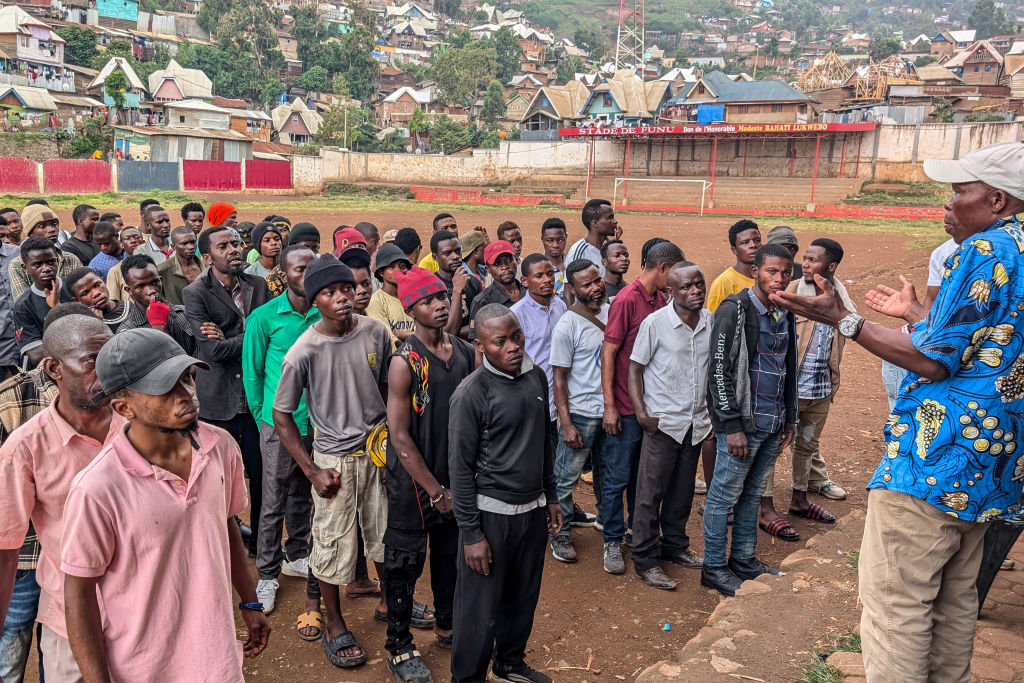Since the 2022 resurgence of the M23 rebel group in the east, the Democratic Republic of the Congo has sought to defend its sovereignty with a military strategy that has relied heavily on proxies, coalitions, mercenaries and allied forces.
It has produced a confusing mix of combatants far from the capital, Kinshasa. Neither of the regional forces from Eastern and Southern Africa have brought stability, while local pro-government militias called Wazalendo (Swahili for “patriots”) and M23 rebels have fought each other and terrorized civilians with impunity. Continuing to look for ways to supplement the Congolese armed forces (FARDC), the government in 2023 established an army reserve, known as the Reserve Armée de la Défense (RAD), composed of armed groups and militia members.
Parliament passed the bill unanimously but criticized it in debate. One member cautioned against building an “army parallel to the republican army.”
The RAD remains conceptual two years later, but some experts have warned the DRC against using armed groups as auxiliaries. Judith Verweijen, assistant professor of international development studies at Utrecht University, and Michel Thill, a senior program officer with swisspeace research institute, recently said that the DRC’s army reserve would perpetuate past mistakes.
“The first iteration of the M23 rebellion in 2012 was the result of rebel integration gone wrong,” they wrote in a January 27 article for The Conversation Africa magazine. “The reserve army risks unleashing the same dynamics of rewarding rebellion by doling out positions to armed group leaders and granting them impunity for past violence.”
M23’s capture of North Kivu’s capital, Goma, in late January represented a major escalation in what had been two years of near-daily fighting. The presence of Rwandan forces has raised the stakes and the threat to civilians.
Rigobert Minani of the Kinshasa-based Center for Social Action Studies said the past 30 years have seen a staggering number of state and regional militaries and nonstate armed groups participate in the Kivu conflict.
“The difference now is that the M23 occupies a territory three times larger than it did in 2012,” he said in an interview with the Wilson Center’s Nathaniel Oakes on January 30. “There is a very clear, very pronounced involvement of Rwandan special forces who don’t hesitate to cross the border and support the rebellion to fight against the Congolese Army.”
A United Nations experts’ report published in July 2024 detailed the surge of 3,000 to 4,000 Rwandan troops and heavy weaponry into eastern DRC. Rwanda’s direct support enabled M23’s expansion, which in turn gave Congolese government leaders the impetus to legitimize armed groups into a volunteer force of territorial defenders.
Verweijen and Thill said that many of the hundreds of armed groups in North and South Kivu have rebranded themselves as Wazalendo even if they are not part of the fight against M23.
“Most Wazalendo groups are allowed to roam around freely and have dramatically expanded their zones of influence and violent systems of revenue generation,” they wrote. “This includes taxation at markets and rapidly proliferating roadblocks, but also ransom kidnappings and contract killings. There is also evidence that Wazalendo groups are engaged in torture, sexual violence and arbitrary arrests, and frequently recruit child soldiers.”
The U.N. experts detailed how government and military authorities flew the leaders of 48 Wazalendo groups to Kinshasa in April 2024 and told them “to remain united” and to continue mobilizing “young” recruits. The authorities also told Wazalendo leaders to prepare lists of their combatants so they could be integrated into the new reserve army after the conflict with M23.
FARDC officers and government officials repeatedly told U.N. experts that supplying and deploying Wazalendo groups in combat was a “necessary evil.” Congolese President Felix Tshisekedi also has said as much, admitting in 2024 to French newspaper Le Monde that Wazalendo fighters were “untrained civilians.”
“The army reserve may be read as the latest attempt at solving the decades-old problem of getting rid of the many armed groups in eastern DRC, this time by bringing them into the fold of the state, yet not into the Army,” Verweijen and Thill wrote.
“However, this solution does risk unleashing many of the same detrimental dynamics as army integration. It may fuel armed mobilization and militarization rather than contain it.”

